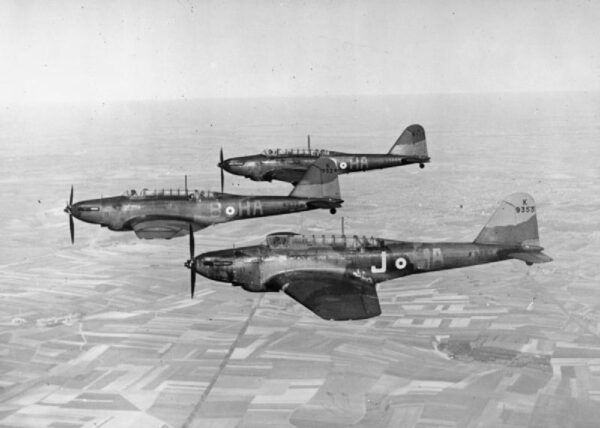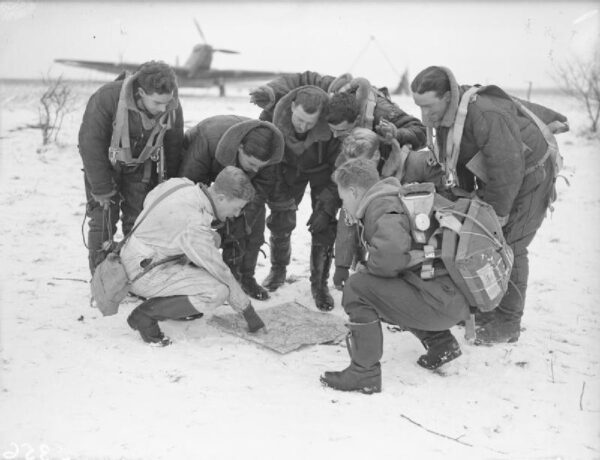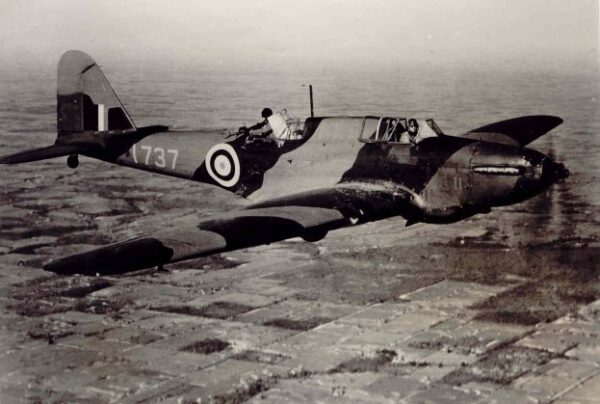Stories
Stories
Fairey Battle
A single-engine light bomber developed and built by the British aircraft manufacturer Fairey Aviation Company; the Battle was introduced to the Royal Air Force in the late 1930s. At the time it represented a significant step forward in terms of design and capability, however, its service with Bomber Command during the early war years revealed critical vulnerabilities.

Fairey Battle fighter bombers of No 218 Squadron over France.
(Credit: Imperial War Museum)
The Fairey Battle was designed to be a modern replacement for the obsolete biplane bombers that had served the RAF since World War I. It featured a sleek monoplane design and was powered by a single Rolls-Royce Merlin engine.
The Battle had a crew of three: a pilot, a navigator/bomb aimer, and a radio operator/rear gunner. The aircraft could carry up to 1,000 pounds of bombs in an internal bomb bay, a significant payload for its time, and was armed with a single forward-firing .303 machine gun and one .303 machine gun mounted in the rear cockpit for defensive purposes.
Entering service with the RAF in 1937, by the outbreak of World War II, over 1,000 had been built. Bomber Command initially deployed squadrons to the Battle in France to support the British Expeditionary Force (BEF), where they were intended to support ground operations by attacking enemy infrastructure, troop formations, and supply lines.

Crews of No. 12 Squadron RAF check their maps on the snow-covered airfield
at Amifontaine, France, a Fairey Battle in the background.
(Credit: Original B&W photo by Official RAF photographer H Hensser, Imperial War Museum)
Despite its advanced design in the mid-1930s, by the time war broke out the Battle was outclassed by more modern and faster enemy fighters, particularly the Messerschmitt Bf 109. Its relatively slow speed limited defensive armament, and vulnerability to anti-aircraft fire made it a target for both ground and air defences.
The most notable engagement involving the Fairey Battle was the Battle of France in May 1940. During this campaign, the Battle was pressed into service in desperate attempts to slow the German advance. On May 10, 1940, one particularly valiant action saw Flying Officer Garland of No. 12 Squadron lead a sortie against the Maastricht bridges in the Netherlands.
As the realities of the air war became clear, it was evident that light bombers like the Battle were too vulnerable without fighter escorts. By mid-1940, Bomber Command began withdrawing the Battle from front-line service, replacing it with more capable aircraft such as the Bristol Blenheim and the Vickers Wellington, and eventually the heavy bombers.

Fairey Battle flown in bombing and gunnery training with the RCAF Bombing and Gunnery School.
(Credit: RCAF Photos)
After being withdrawn from front-line service, the Fairey Battle continued to serve in various secondary roles. It was used extensively as a trainer aircraft for bomber crews, helping to prepare new pilots, navigators, and gunners for the rigours of combat. The Battle also found use in other non-combat roles, such as target tug and communications duties.
While the Battle may not have achieved the same legendary status as some of its successors, the Fairey Battle remains a poignant reminder of the courage and determination of aircrews in the face of daunting challenges in the early years of the war.